Fox’s latest DHX Factory coil-sprung rear shock was released alongside the Float X – the air-sprung version of this latest damper platform – both aimed at trail riding and beyond, hinting at a wide range of potential uses.
The DHX shock sits beneath the DHX2 Factory in Fox’s line-up, with only external low-speed compression and rebound adjustments compared to the DHX2’s low- and high-speed rebound and compression.
It is only offered in Fox’s Factory range as an aftermarket product, but the Performance Elite and Performance models can be found as original equipment on a large number of bikes.
Fox DHX Factory rear shock specifications and details

Fox claims the DHX’s high-flow main piston, and all-new chassis and damper design mean it offers “magic-carpet, trail smoothing performance…”.
Although the term ‘magic carpet’ is on BikeRadar’s banned phrase list, I believe Fox is saying this DHX is the most supple damper it has made to date.
Like the air-sprung Float X, the DHX has 11 clicks of low-speed compression damping adjustment and 16 clicks of low-speed rebound tuning. It has an independent 2-position open/firm lever designed for pedalling.
The damper features a hydraulic top-out that ‘cushions’ the shock’s shaft as it reaches full extension. The shaft – that’s made from Chromoly with an ultra-low friction finish rather than a Kashima coating – is fitted with a large MCU bottom-out bumper to help reduce harsh bottom outs.
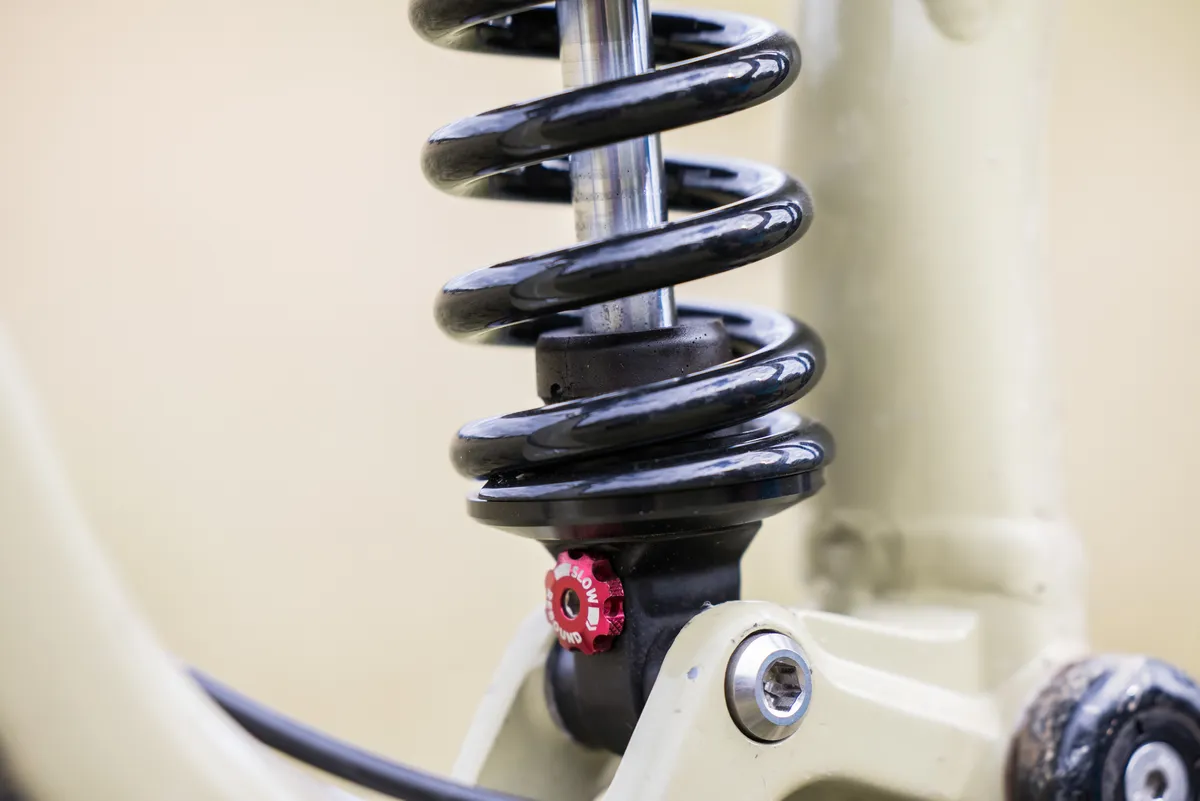
The piggyback reservoir is scaled for each shock size, so longer stroke shocks with more oil to displace have a bigger reservoir, making them suited to more extreme riding generally associated with the longer-travel bikes they’re found on.
The coil spring preload collar has detents to help with keeping track of preload.
My 205x65mm trunnion-mount Fox DHX Factory shock weighed 509g on my scales, without a spring or hardware. A 450lb/in Fox SLS spring weighed 353g, taking the combined weight to 862g.
Fox DHX Factory rear shock performance

I tested the Fox DHX Factory rear shock on my Marin Alpine Trail XR. The Marin has 150mm of rear-wheel travel and its four-bar suspension design is roughly 17 per cent progressive.
This level of progressivity makes it more suited to adjustable-volume progressive air springs, but with the right tune, spring weight and bottom-out resistance, a coil shock works well.
The DHX Factory was tested back-to-back with Fox’s Float X, Float X2 and DHX2, and the RockShox Super Deluxe Coil Ultimate on the same trails over multiple months, taking in a wide range of conditions.
Testing happened in Scotland’s Tweed Valley, host to the UK’s round of the Enduro World Series, and Glentress Trail Centre, with trails ranging from DH- and enduro-specific runs through to gentle trail-centre loops.
Fox DHX Factory rear shock setup
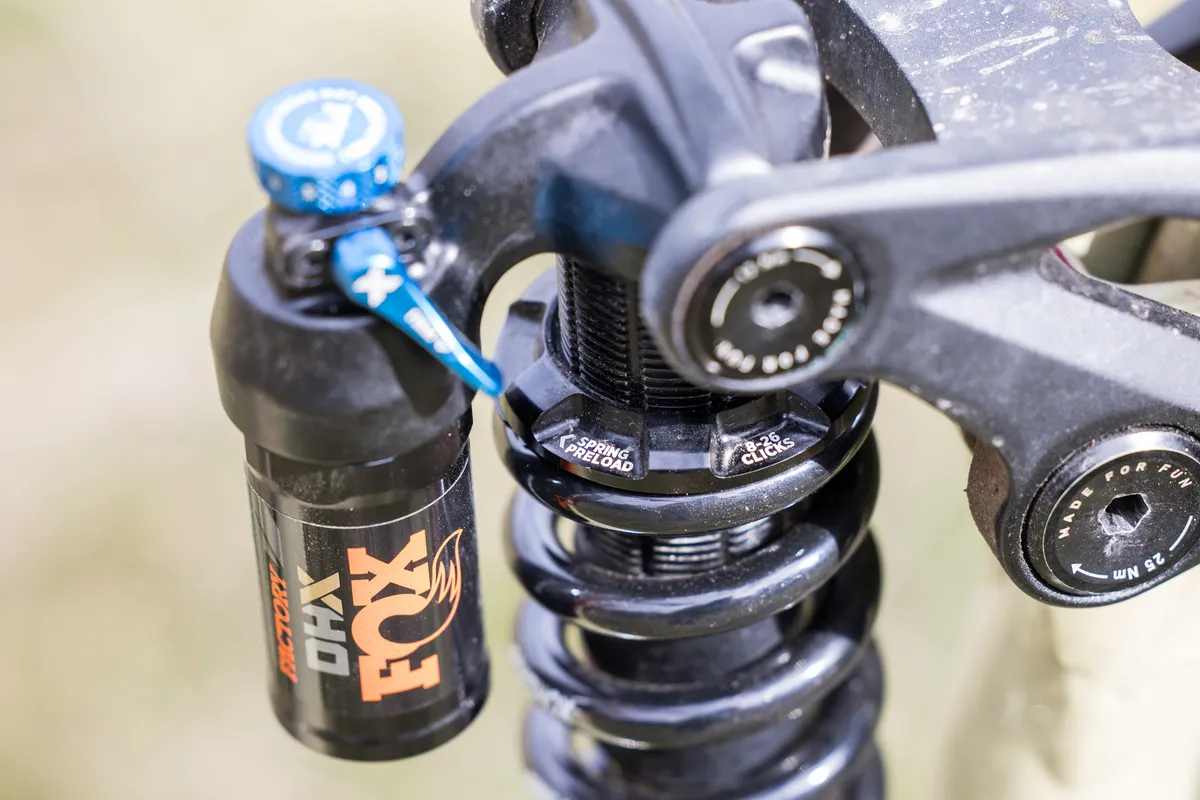
Like the Float X Factory I also tested, the aftermarket DHX is delivered with Fox’s stock medium rebound and compression tunes.
Fitted with a 450lb spring, giving 24 per cent sag, I had to run the external damping adjusters fully open because it felt as though it was choking on the compression stroke and not returning quick enough for the next hit thanks to the rebound damping.
To increase the rebound speed, I went up to a 500lb spring. While this helped the shock return more quickly, it exasperated the compression spike, because I was now running a spring that was too hard.
After a few weeks of testing, it became apparent both the stock compression and rebound damping tunes were too hard and unsuited to the Marin’s kinematics as well as my tastes and weight.
As on the Float X, I was sure more performance could be unlocked with lighter compression and rebound tunes.
Fox agreed to re-tune the shock to make it more suited to the Marin’s kinematics. Prices start at £40 (in the UK) for this service, and most Fox service centres across the globe can re-tune your shock.
Fox says the stock tune on its aftermarket DHX shocks will be suited to the widest possible range of bikes and riders and it’s likely the tune will be suited to your needs.
In my opinion, it is worth factoring in the cost of a re-tune on any aftermarket suspension product so its performance potential can be truly taken advantage of.
Once the shock had been re-tuned, I settled on the 450lb spring (after trying 425b, 475lb and a 500lb), still with 24 per cent or 16mm sag. Although I ended up with the rebound damping adjustment still set to fully open, I closed the low-speed compression adjustment by 5 clicks from fully open.
Fox DHX Factory rear shock adjustability
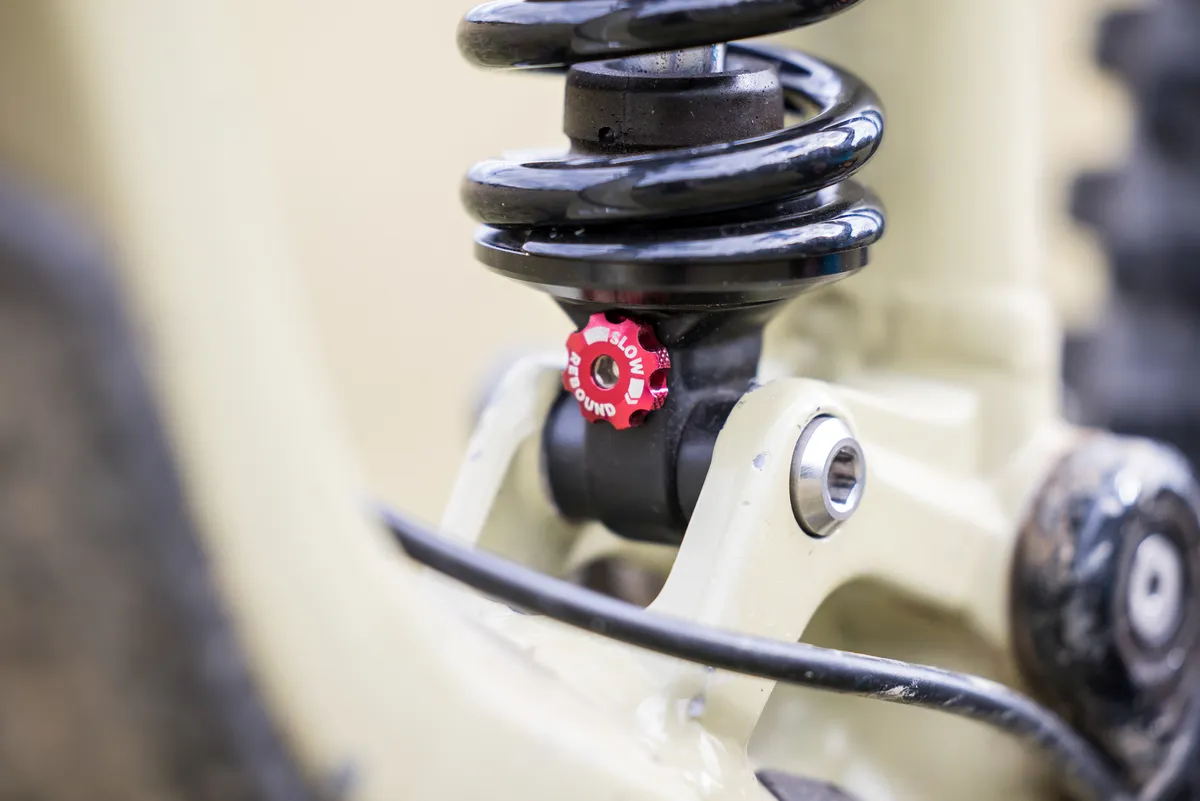
Impressively, the rebound and compression adjustment dials on the DHX had a profound effect on how the shock handled.
Adding a few clicks of low-speed compression adjustment increased the amount of support on offer through berms or in compressions, and unless the adjustment got close to being fully closed it didn’t feel as though it affected the high-speed compression circuit causing compression spike on fast, successive hits.
The rebound was just as adjustable with the dial, where a few clicks of the adjuster had a marked change on the return speed. However, for my preferences I left it in its fully open position, even after the re-tune.
This suggests lighter riders might struggle to get the rebound fast enough for their tastes because of the lower spring forces found on lighter springs.
Fox DHX Factory rear shock on-trail feel

Once it was re-tuned, I was massively impressed by its performance.
The DHX’s smoothness and sensitivity stood out, especially on flatter, rougher trails where holding speed was key. It worked overtime fluttering in and out of its sag point to absorb trail chatter, providing grip and smoothness.
This supple action made holding speed much easier, because the rear suspension wasn’t choked by an over-damped beginning stroke or by excessive friction.
There was plenty of grip when trying to stick choppy off-camber sections and holding a line was also simplified compared to shocks that have more resistance at the start of their stroke. The free-moving nature of the DHX meant wheel traction was good.
Buzzing around worn trail centre tracks – where off-the-top smoothness was essential – wasn’t a bone-rattling affair, instead the rear end worked overtime to absorb the high-frequency bumps.
Mid-stroke support was also impressive, and dialling in low-speed compression made the bike ride higher in its travel through turns or into compressions, helping preserve its geometry.

The same was true deeper into the travel, where the chunky bottom-out bumper reduced the harshness and regularity of hard bottom-outs. In terms of how much end-stroke cushioning there was, the DHX felt very similar to the DHX2’s ample resistance.
Its pedal lever performed well, too, providing plenty of support to resist pedal bob on smoother fire roads or tarmac transitions. However, to avoid sacrificing grip and comfort, I very rarely used the function.

So far, so good then.
Beyond needing a re-tune, the most frustrating feature of the DHX was a clicking noise and corresponding feeling it made when the shaft changed direction between the compression and rebound strokes.
I was able to feel this both when the shock was near to or at full travel, and when it was deeper in its stroke.
It felt as though the clicking was caused by the shock’s damping circuits opening and closing as it moved from rebound to compression and vice versa.
While this didn’t affect performance in the slightest, the clicking noise and feeling was annoying, especially when riding along rougher, worn-out surfaces with lots of small bumps.
How does the Fox DHX Factory rear shock compare?
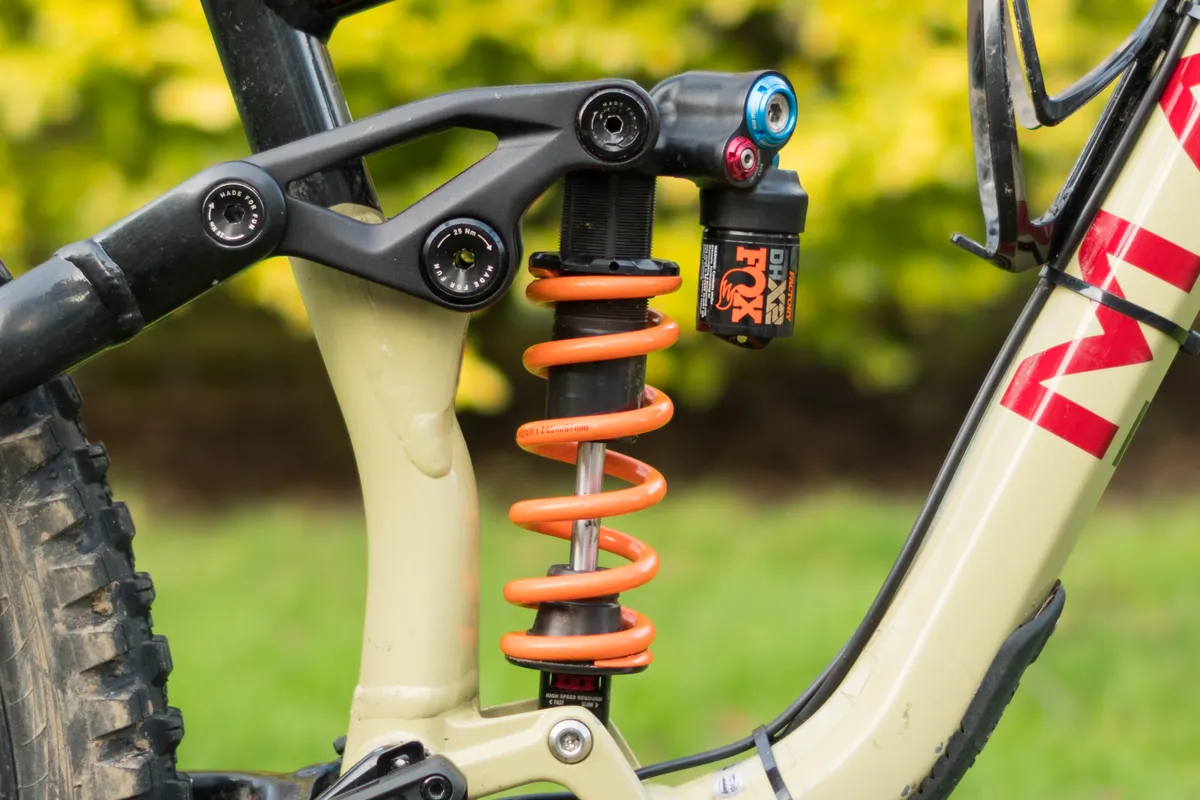
Out on the trail, the biggest difference between the DHX2 and the marginally cheaper and heavier DHX was the clicking feeling and noise I've already mentioned. The DHX2 didn’t suffer from the same issue.
Arguably, the DHX2’s additional adjustments increase the number of bikes it can be tuned for, without having to send it to a Fox service centre for a full re-shim.
Despite that, the scope of the DHX’s adjustments were impressive, even compared to the DHX2, where a small amount of dial-turning equated to a change in characteristic.

Compared to Fox’s Float X2 and Float X, the DHX was much smoother at the start of its travel, but the linear spring rate – that can’t be tuned with volume-reducer spacers – meant not only did it lack some of the damping adjustment of the Float X2, but also the spring adjustment of both of Fox’s air shocks.
If you’re a heavier or harder rider, or ride a bike without much in-built progression, the DHX, like most other coil shocks, is much trickier to tune.
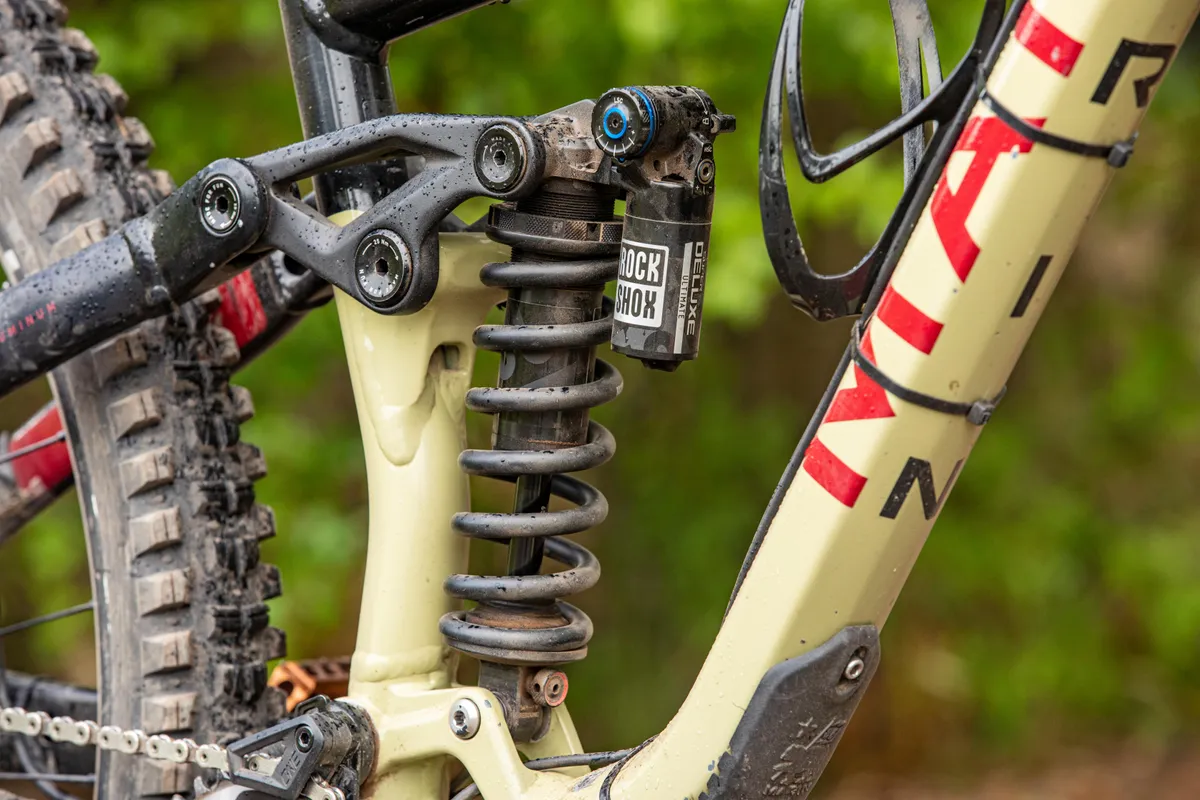
RockShox’s recently launched Super Deluxe Coil Ultimate has truly put the cat amongst Fox’s pigeons. It has a cheaper asking price (£530), a lower weight figure (486g, 205x65mm trunnion) and the impressive Hydraulic Bottom Out (HBO) adjustment compared to the DHX.
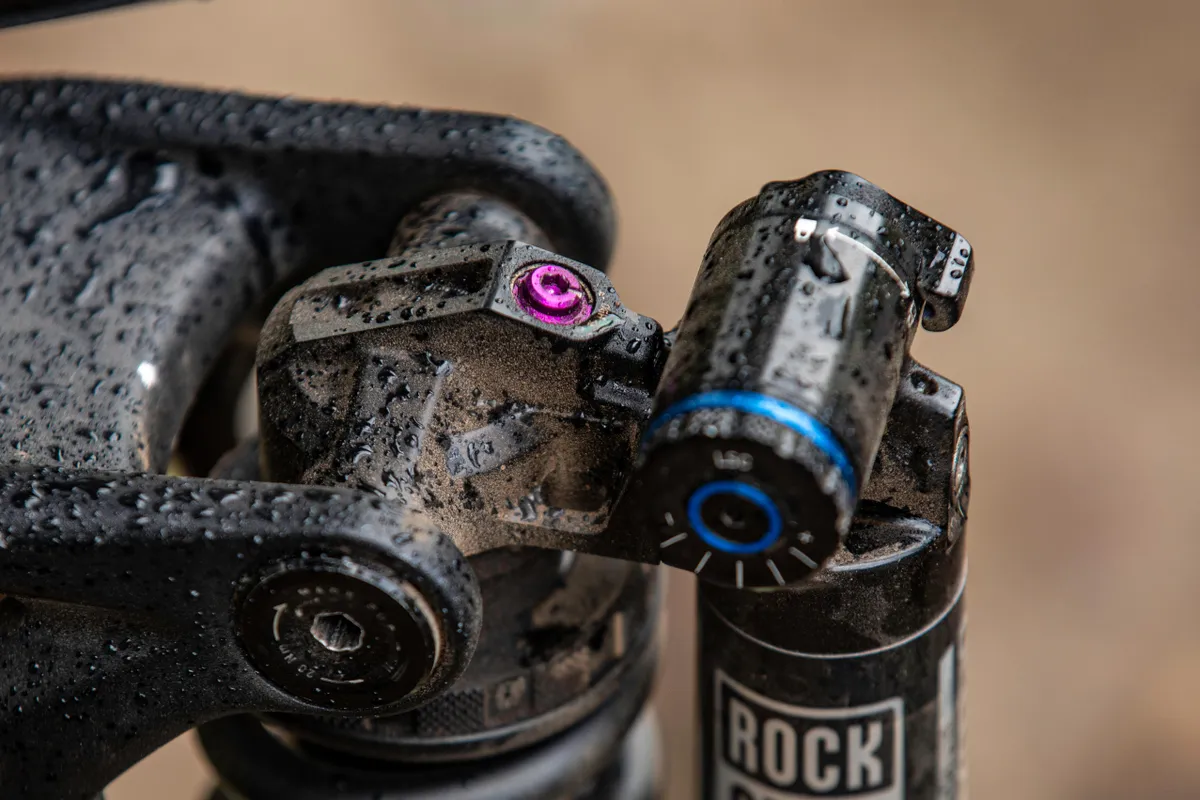
The RockShox shock also offers low- and high-speed compression adjustment and low-speed rebound, which is more than the number of external adjustments the DHX has.
But does it feel better than the DHX?

Both shocks had a re-tune for my bike and preferences to level the playing field. While the Super Deluxe’s mid-stroke, bottom out and adjustability all trump the DHX’s performance, the Fox is still marginally smoother at the start of its travel, despite the damping circuit click.
But RockShox’s HBO brings coil performance to bigger or harder riders and linear bikes that would usually be better off with an air-sprung shock, something the Fox can’t do.
The scope of the Super Deluxe’s performance is much broader than the DHX, and for me the RockShox unit pips the DHX to the post.
Fox DHX Factory rear shock bottom line

Fox’s DHX Factory rear shock impressed me out on the trails, and its performance extends well beyond the ‘trail’ riding Fox says it's designed for.
Arguably, performance is on par with the more expensive DHX2, especially in terms of smoothness at the start of its travel and mid-stroke support. Bottom out is just as well controlled, too. The damping circuit clicking noise is annoying at worst, and some riders may not notice it at all.
For the reduction in cost, you lose some external adjustment, which might make the £90 upgrade worth it for some.
A re-tune was essential to eke out the DHX’s performance potential, but that’s frequently the case when buying an aftermarket damper or for those looking for even more capability. That said, not all bikes will need a re-tune, and the stock medium rebound and compression tunes will be perfect for many.
The biggest hurdle for the DHX is RockShox’s latest Super Deluxe Coil, that’s both cheaper and lighter. Yes, off-the-top performance is fractionally better on the DHX, but in all other metrics the RockShox trumps it.
If you’ve got your heart set on a fit-and-forget top performer, without a host of potentially confusing adjustments, the DHX could be perfect for you.
Product
| Brand | fox |
| Price | 759.00 EUR,629.00 GBP,549.00 USD |
| Weight | 509.0000, GRAM (205x65) - Without spring, 205x65 |
| br_whatWeTested | Fox DHX Factory |
Features
| br_spring | coil |
| br_lockout | yes |
| br_travel | 65.0000 |
| br_travel | MILLIMETER |
| br_damperAdjust | Low-speed compression and rebound, firm lever |
